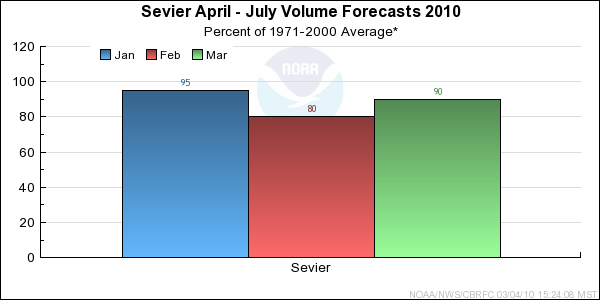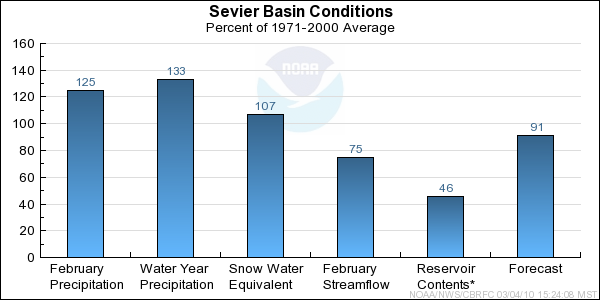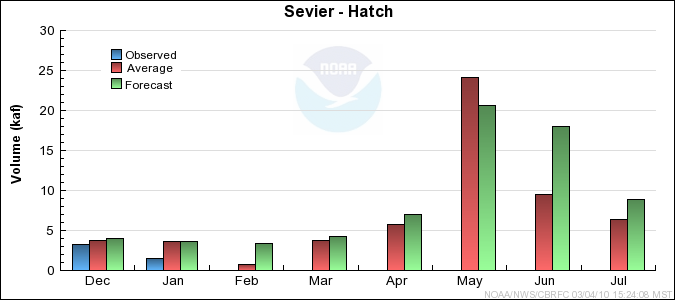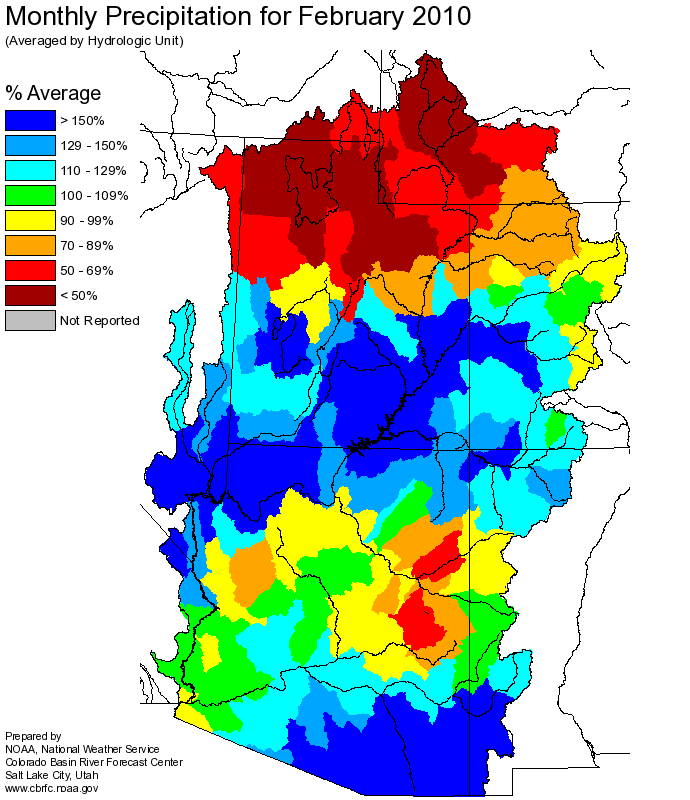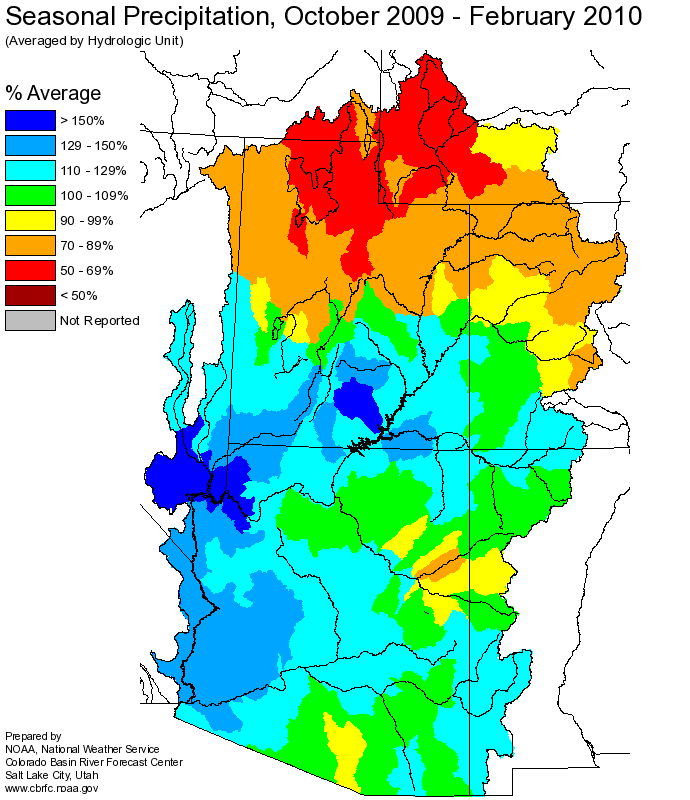The following conditions influenced this month's forecasts:
Precipitation:
Seasonal October through February
precipitation was 133 percent of average
in the Sevier River Basin. February
precipitation was 125 percent of average.
Streamflow:
February streamflow estimates for the Sevier River at Hatch were 76 percent of average.
Snowpack:
March 1st snow water equivalent was near 107 percent of average in the basin as a whole. In the headwater regions the indexed total is 139 percent of average.
In the lower basin, indexed snow along the Wasatch Plateau is currently near 69 percent of average.
Upper Sevier River Basin
Snow Plot.
Sevier River Basin
Snow Plot.
Lower Sevier River Basin
Snow Plot.
Soil Moisture:
Modeled Soil
Moisture, click on map to zoom. Soil moistures remain dry from last spring and summers warm and dry conditions.
Climate Forecasts:
El Nino climate conditions suggest increased chances for precipitation in this area.
The El Nino influence was not directly accounted for in the generation of these forecasts.
Forecast Summary:
The Sevier Basin contines to have above average seasonal precipitation, paired with drier soil moisture conditions, a result of last years dry conditions. These conditions combined
with much above average snowpack in the upper basin have increased the forecasted April through July volumes in the upper basin. However in the lower basin from Piute Reservoir north,
namely along the central Wasatch Plateau, snowpacks are below average.
Sevier River Basin forecast
currently range between 66 and 133 percent of average with a median value of 91 percent of average.
Differences between the full period forecasts and the residual forecasts may not exactly equal the actual observed volumes due to rounding conventions (see Definitions section).


